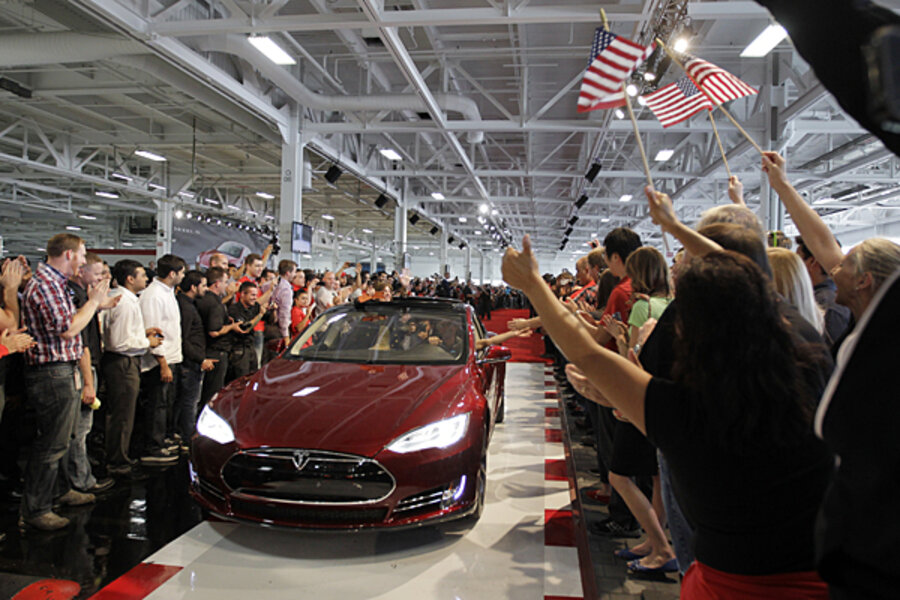Tesla's lips zipped on Model S electric car sales figures
Loading...
It may be the most eagerly sought piece of information in the plug-in electric car world.
And Tesla Motors [NSDQ:TSLA] ain't talking.
The company has a set policy of not disclosing monthly sales figures or production figures until it has to by law.
So it'll be another month or so before we know how many Tesla Model S electric cars it built, and how many it delivered, through December 31 of last year.
In September, Tesla said it expected to deliver 2,700 to 3,225 cars by the end of the year--down from its initial 2012 estimate of 5,000 cars.
Now the prolific members of the unaffiliated Tesla Motors Club forum have crowdsourced data that may shed some light on the production quantity.
A lengthy thread starts off with a post by member BMek, who posts a neat chart of various VehicleIdentification Number (VIN) data points.
Those include "highest VIN assigned in 2012" (that would be 3383, per member Bonforte), the "highest VIN reported on a truck" (3235, per Jat), and "highest VIN physically delivered" (3026, per "b").
Aren't the Intertubez wonderful?
So that leaves us to parse the numbers, assuming that Tesla--like most automakers--assigns its VINs sequentially.
From this, we take away that Tesla delivered roughly 3,000 Model S electric luxury sport sedans by Dec 31, and produced perhaps 3,350--since VINs may have been assigned to cars not yet completed.
That puts them right in the middle of their revised September projection, which--if our guess is accurate--should make investors happy.
Like our estimate of Fisker Karma production last August, this is guesswork necessitated by the company's stonewalling.
Tesla representatives have said they don't feel the need to release such information, because their buyers don't care and their investors are satisfied with quarterly financial reports.
We're not sure we agree that buyers are disinterested--since a whole lot of Model S reservation holders have asked us that very question--but, hey, we're not selling cars, Tesla is.
Meanwhile, we'll find out the true numbers sometime in February, when Tesla Motors files its fourth-quarter and year-end financial results with the Securities and Exchange Commission.







